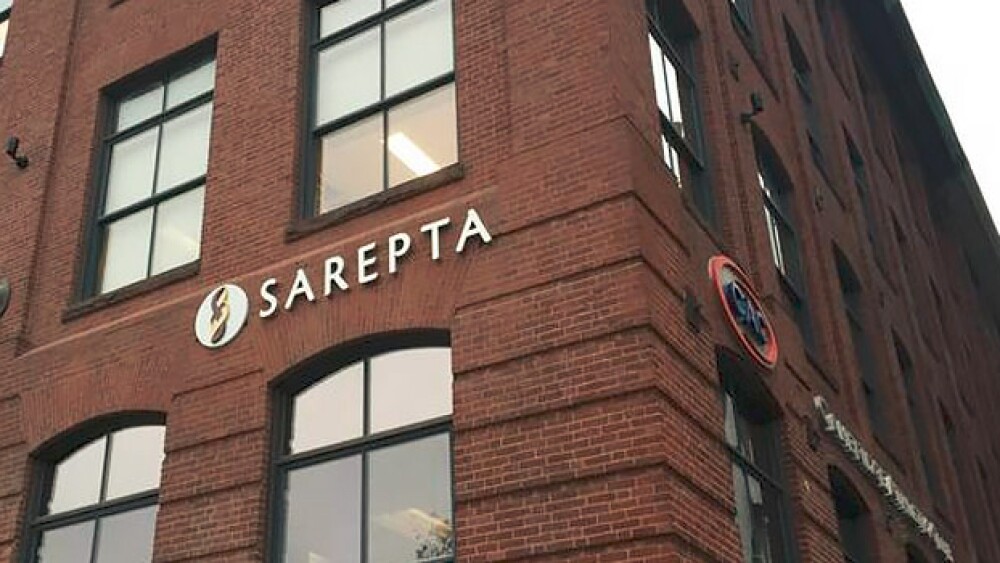On Monday, Sarepta Therapeutics announced positive results from a small study of SRP-9003, its gene therapy for limb-girdle muscular dystrophy Type 2E (LGMD2E).
On Monday, Sarepta Therapeutics announced positive results from a small study of SRP-9003, its gene therapy for limb-girdle muscular dystrophy Type 2E (LGMD2E). This is a type of muscular dystrophy that affects both males and females. To date, the company’s successes have been in Duchenne’s muscular dystrophy (DMD), which primary affects boys.
The success has caused analysts and investors to speculate that the company is on the right track with gene therapies, which the company’s chief executive officer, Doug Ingram, saying the company would spend $600 million on expanding. Sarepta currently has 27 possible gene-augmenting therapies in development.
“We think this sets up Sarepta to pursue a pivotal program at the higher dose and confirms the safety that we have seen with SRP-9001 in Duchenne muscular dystrophy, which utilizes the same vector (to deliver the gene),” Brian Skroney, an analyst with Baird, wrote in a note to investors.
The data included safety and expression results from three clinical trial participatns in the high-dose cohort measured at 60 day, as well as one-year functional data from three participants in the low-dose cohort.
SRP-9003 is a “gene construct” that delivers a gene that codes for the full-length beta-sarcoglycan protein. It is the absence of this protein that results in LGMD2E.
The SRP-9003 trial had two cohorts, each cohort evaluating a different dose-per-kilogram based on the patient’s weight. The three patients in the low-dose cohort received a one-time infusion of SRP-9003 at 5x1013 vg/kg and the three on the high-dose cohort received a one-time infusion at 2x1014 vg/kg.
“We were very encouraged by the previously reported results from our first cohort of patients treated with a lower dose of SRP-9003, including impressive expression, good tolerability, and positive functional signals, which continue impressively at one year,” said Ingram. “We are excited to have been able to achieve even more impressive expression and other biomarkers in our higher-dose cohort for SRP-9003, along with good tolerability. The SRP-9003 gene construct, vector and promoter were designed with the goal of robustly delivering to skeletal and cardiac muscles a gene coding for the missing beta-sarcoglycan protein that causes LGMD2E. These data support the conclusion that the therapy is achieving its intended purpose, driving robust expression in the muscles where it is needed.”
All three patients in the low-dose cohort continued to show improvements across all functional measures at one year. These measurements included time-to-rise, four-stair climb, 10-meter walk test and 10-meter walk test. Sarepta indicates the results were “distinctly different” from what has been seen in an age-matched, natural history group. What that means is there is essentially no control group, but the results of the patients receiving the gene therapy are compared to what is observed in other patients of the same age and gender and disease progression.
Currently, Sarepta has two products on the market, both for Duchenne muscular dystrophy, Exondys 51 and Vyondys 53, which use exon-skipping technology for different segments of the dystrophin gene affected in the disease. Both drugs were approved with a certain amount of controversy.
Sarepta is the only company to have an approved treatment for DMD on the market, Exondys 51, which was approved in 2016 after a contentious and year-long public process. Exondys 51, as the name suggests, is for DMD patients with a confirmed mutation amenable to exon 51 skipping. There was quite a bit of doubt as to how effective the drug actually was, with patient advocates and Congress urging the agency to approve the drug—or any drug—for the disease.
DMD is a muscle wasting disease caused by mutations in the dystrophin gene. It is a progressive disease that usually causes death in early adulthood, with serious complications that include heart or respiratory-related problems. It mostly affects boys, about 1 in every 3,500 or 5,000 male children.
Last year, the U.S. Food and Drug Administration (FDA) issued a Complete Response Letter (CRL) to Sarepta Therapeutics over its golodirsen (Vyondys 53) for Duchenne muscular dystrophy (DMD) with a confirmed mutation amenable to exon 53 skipping.
The agency’s concerns were related to the risk of infections at intravenous infusion ports and renal toxicity observed in preclinical models and after administration of other antisense oligonucleotides. However, Sarepta noted that the renal toxicity issues with golodirsen were seen in preclinical models at doses ten-fold higher than used in clinical studies and wasn’t observed at all in the study the FDA application was based on.
Then, in December 2019, the FDA approved the drug.
Meanwhile, the company has dramatically increased its investments in gene therapies, with deals worth more than $360 million with Nationwide Children’s Hospital, StrideBio, Myonexus Therapeutics, and Dyno Therapeutics. It has built a gene therapy facility in Columbus, Ohio. And then it signed a deal with Roche, with the Swiss company paying ex-U.S. rights to its MD gene therapy candidate, SRP-9001, for $1.1 billion upfront with up to $1.7 billion in various milestones and royalties.





